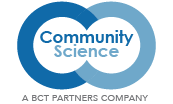Data is everywhere. We hear it in speeches, see it in reports, and rely on it to make critical decisions. But what happens when data is taken out of context? When numbers are selected because they are “easy” to track? Or when statistics are reported to support a particular narrative rather than to tell the full story? As someone who works at the intersection of data, equity, and organizational strategy, I see this all the time. And the consequences can be profound — leading to misinformed decisions, eroded trust, and policies that reinforce inequity rather than address it.
Data Without Context Is Just Noise
Data is powerful. It helps us measure progress, uncover and understand disparities, and drive change. But numbers alone are not enough. Context is everything. Without understanding where data comes from, what it represents, and what it omits, we risk drawing misleading conclusions.
We see this play out across sectors — public, private, and philanthropic — when data is presented without the surrounding story. Sometimes, statistics are spotlighted to justify budget cuts or policy shifts, without sharing the full picture of who is impacted, what programs actually achieve, or why they exist in the first place.
Take, for example, a public investment in a children’s program that was recently cited as unnecessary spending. On the surface, the number alone — $20 million — might raise eyebrows. Looking more closely though, that investment supported the adaptation of a television program to help children displaced by war and conflict. This is more than a show — it’s a high-impact intervention to support literacy, emotional well-being, and early learning for some of the world’s most vulnerable children.
This phenomenon is not unique to one program or sector. There are plenty of examples of how data can be presented in ways that oversimplify complex realities across philanthropy, government, and business. That’s why it’s critical to approach data not simply as a collection of numbers, but as a story that needs thoughtful framing.
Using Data Thoughtfully: The Questions That Matter
When context is missing, data can be easily misunderstood. But when approached with intention, data can be a powerful driver of clarity, alignment, strategy, and ultimately, equity.
So, how do we make sure we are using data in meaningful, accurate, and actionable ways? Instead of chasing every available metric, leaders should focus on three essential questions:
- Are we measuring what actually matters? Data should serve a purpose. Are we collecting numbers because they are easy to track or because they reflect meaningful progress? Too often, organizations default to surface-level indicators — sometimes known as outputs (e.g., how many people attended a training?) —instead of more meaningful outcomes (e.g., how has organizational culture changed as a result?).
- What story does this data tell — and what does it leave out? Whose voices are amplified and whose are left out? Every dataset has limitations. What perspectives are missing? Are we only looking at quantitative metrics when qualitative insights might reveal more? If we see racial disparities in hiring, do we understand the barriers causing them or are we simply reporting numbers without digging deeper for the root cause?
- How are we transforming this data into actionable insight to drive change? Data should drive strategy. What are the 1–3 most important actions we need to take based on what we’re seeing? Are we being thoughtful and measured in our approach or are we throwing spaghetti at the wall hoping something sticks?
From Data Confusion to Data Clarity: How We Help Organizations Get It Right
The risks of decontextualized data are real — but so are the opportunities when we use data well. We work with organizations to address these challenges. Here are three examples where we have helped our clients to cut through the noise and turn data into action:
- Untangling the Kitchen Sink Approach: One organization we worked with was deeply committed to using data to inform decisions, but found themselves overwhelmed by an extensive survey process. While they were collecting a lot of information, it became clear that it was not serving a clear purpose. Additionally, their stakeholders were experiencing survey fatigue, making it harder to gather high-quality insights. We partnered with them to refine their data collection strategy, ensuring that the data they gathered was meaningful and actionable. By focusing on clarity and intentionality, they were able to streamline their approach, reduce the burden on stakeholders, and generate insights that truly drove decisionmaking.
- Aligning Strategy with Reality: We partnered with a foundation working to transform the early childhood education landscape at a systems level. Recognizing the need for data, we worked with them to co-create and operationalize their vision, defining key indicators that truly reflected progress. As the work progressed, it became clear that grantees’ capacity to collect data varied. Recognizing that not every organization had the same resources to track complex metrics, the client built in capacity-strengthening and technical assistance. Our partnership with this foundation has been a journey of learning and refinement, with data serving as a tool to drive equity-centered decisionmaking rather than a burden.
- Using Data to Make Equity-centered Funding Decisions: In another engagement, we worked with an organization tasked with distributing limited resources. Historically, within this particular context, this translated into spreading funding broadly — aimed at ensuring everyone received something, even as the number of requests grew. But when we examined the data holistically, we found this approach was diluting impact rather than driving change. Through a multi-perspective data collection process that centered lived experience, we helped reimagine what meaningful, equity-driven investment looked like. Instead of spreading resources thinly or defaulting to the loudest voices, they are now considering recommendations for making strategic, high-impact funding decisions that serve the most underserved communities.
The Balance Between Data and Discernment
Being data-driven is not about tracking more numbers — it’s about tracking the right ones well. It’s about understanding the full story behind the metrics, not just those that confirm what we already believe or want to believe. It’s about ensuring our decisions, policies, and strategies truly serve their intended purpose rather than being dictated by out-of-context numbers and statistics.
As leaders, we must ask ourselves: Are we using data as a tool for truth or as a weapon for persuasion? Are we tracking progress in a way that leads to meaningful change or are we measuring for measurement’s sake? These distinctions make all the difference.
When used responsibly, data is one of the most powerful tools we have to advance equity and create effective, sustainable change. But only when we use it with care, intention, and an unwavering commitment to context.
If you’re ready to move beyond the noise and harness data for real impact, let’s talk. Because data should work for you — not against you.

About The Author
Michelle Haynes-Baratz, Ph.D., Managing Associate, is an organizational psychologist who brings two decades of experience researching, developing, and implementing evidence-based interventions to create more equitable and inclusive workplaces. She specializes in leveraging data, both quantitative and qualitative, to understand organizational ecosystems with a specific focus on transforming organizational culture and climate with equity at its core.
